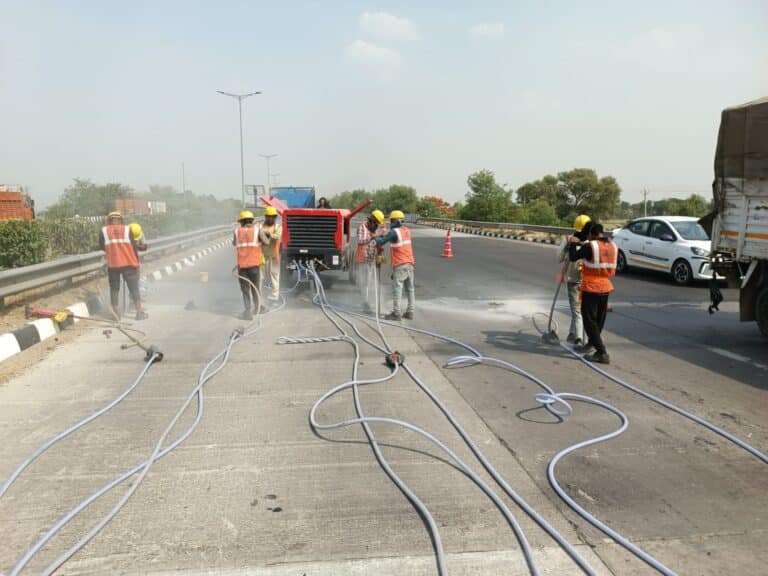Pavement Rehabilitation through Void Filling Beneath PQC Panels
Pavement Rehabilitation through Void Filling Beneath PQC Panels

Rigid pavements are widely used in highways, airports, and industrial corridors due to their ability to withstand heavy traffic loads. However, the presence of voids beneath Pavement Quality Concrete (PQC) panels pose structural risk to rigid pavements.
To address this challenge along a major roadway, we used a Falling Weight Deflectometer (FWD) test, which revealed significant voids beneath PQC panels. These voids, caused by inadequate compaction, settlement of sub-base layers, and water infiltration, posed risks of cracking, pumping, and premature pavement failure. Addressing these defects quickly and effectively was critical to restoring safety, extending service life, and minimizing maintenance costs of the roadway.
Our goal was to implement a modern void-filling solution that would reinforce the pavement while minimizing traffic disruption and ensuring optimal durability.
Our Approach
We employed advanced techniques aligned with Indian Road Congress (IRC) and Indian Standards (IS) codes, ensuring the highest standards of safety, quality, and efficiency throughout the execution process.
- Protective Safety Planning: We prepared a comprehensive safety plan to ensure that all activities were carried out with minimal risk to the workers and the public. We took necessary measures to minimize disruption to regular traffic.
- Precision Drilling: This involved conducting precision drilling of holes in the PQC panels, allowing access to the voids beneath.
- Cement Grouting: We injected high-quality cementitious grout into the drilled holes to fill the voids. The process adhered to applicable IRC and IS specifications, ensuring that the materials used were of superior quality and that the filling was done effectively.
Outcome: Safer Pavements, Safer Roads
The void-filling operation was executed smoothly, restoring the structural foundation of the rigid pavement system. Our engineers delivered a solution that exceeded at all fronts of efficiency, safety, and long-term resilience. Our streamlined workflow and advanced machinery minimized traffic disruption, and precise application of high-quality grout ensured the pavement’s performance for years to come.
This project stands as a benchmark in the field of rigid pavement rehabilitation in India, demonstrating how modern methodologies, combined with adherence to established standards, can deliver superior results. It highlights the effective fusion of traditional engineering practices with modern technology, setting a new standard for future pavement rehabilitation projects in the region.


